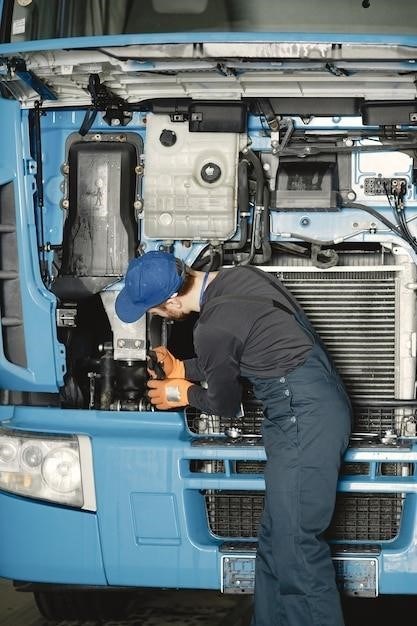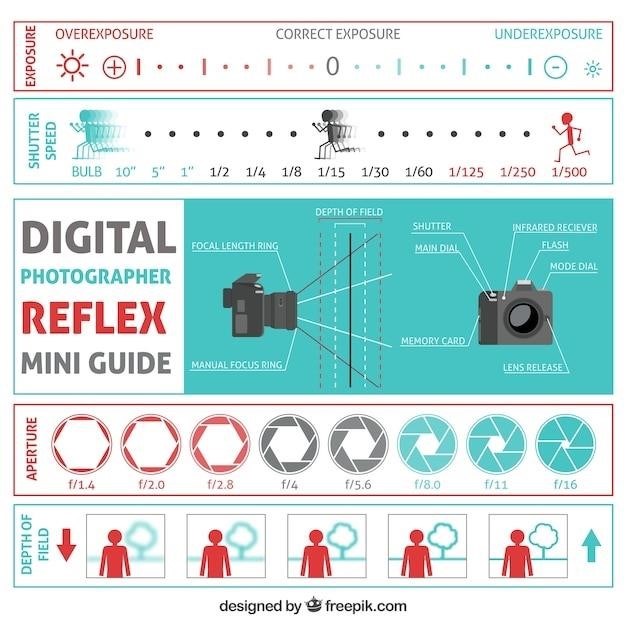sl3000 manual
SL3000 Manual⁚ A Comprehensive Guide
This comprehensive guide provides detailed information on the SL3000, a powerful and reliable sliding gate operator. From technical specifications and features to installation, operation, maintenance, and troubleshooting, this manual serves as your ultimate resource for understanding and maximizing the performance of your SL3000 system.
Introduction
Welcome to the SL3000 Manual, your comprehensive guide to understanding and utilizing this powerful and versatile sliding gate operator. The SL3000, a product of LiftMaster, is designed for both residential and commercial applications, providing reliable and secure gate automation. This manual aims to equip you with the knowledge and instructions necessary to install, operate, maintain, and troubleshoot your SL3000 system effectively. Whether you are a homeowner seeking to enhance security and convenience or a professional installer looking for detailed technical information, this manual will serve as your essential reference point.
Throughout this guide, we will delve into the technical specifications, features, and benefits of the SL3000, providing clear and concise instructions for installation, operation, and troubleshooting. We will also cover important safety precautions and maintenance procedures to ensure the longevity and optimal performance of your system. With this manual in hand, you’ll be confident in your ability to seamlessly integrate the SL3000 into your property and enjoy the enhanced security and convenience it offers.
Technical Specifications
The SL3000 is a powerful and robust sliding gate operator designed to meet the demands of both residential and commercial applications. Here are some key technical specifications that highlight its capabilities⁚
- Power⁚ Available in 1/2 HP and 1 HP AC models, providing ample power for various gate sizes and weights.
- Duty Cycle⁚ Designed for high traffic environments with a robust duty cycle, ensuring reliable performance even with frequent use.
- Gate Weight Capacity⁚ The SL3000 can handle gates weighing up to a certain weight, depending on the specific model. Consult the product manual for detailed weight capacity information.
- Gate Length⁚ The SL3000 can accommodate gates of varying lengths, ensuring compatibility with a wide range of applications.
- Operating Voltage⁚ The SL3000 operates on standard AC power, ensuring compatibility with most electrical systems.
- Safety Features⁚ Equipped with various safety features, such as force-limiting technology and obstruction detection, ensuring safe operation and protecting the gate and surrounding areas.
- Control Options⁚ The SL3000 offers multiple control options, including remote control, keypad, and wired control, allowing for convenient and customizable operation.
These specifications demonstrate the SL3000’s ability to handle a wide range of gate sizes and traffic volumes, making it a reliable and versatile solution for various security and access control needs.
SL3000 Features and Benefits
The SL3000 sliding gate operator is packed with features that enhance its functionality, reliability, and user experience. Here are some notable features and benefits⁚
- Smooth and Quiet Operation⁚ The SL3000 operates smoothly and quietly, minimizing noise and vibrations, ensuring a pleasant user experience.
- Durable Construction⁚ Built with high-quality materials and robust construction, the SL3000 is designed to withstand the elements and provide long-lasting performance.
- Versatile Applications⁚ Suitable for both residential and commercial applications, the SL3000 can be used to secure a wide range of properties, from homes to industrial facilities.
- Easy Installation⁚ Designed for ease of installation, the SL3000 can be installed by qualified professionals, ensuring proper setup and functionality.
- User-Friendly Controls⁚ The SL3000 offers user-friendly controls, making it easy to operate and manage the gate, even for those with limited technical expertise.
- Enhanced Security⁚ The SL3000 provides enhanced security with features such as force-limiting technology, which prevents gate damage in case of obstructions, and obstruction detection, which stops the gate if an object is detected in its path.
- Energy Efficiency⁚ The SL3000 is designed to be energy efficient, minimizing energy consumption and reducing operating costs.
These features and benefits contribute to the SL3000’s reputation as a reliable, safe, and user-friendly sliding gate operator, providing a comprehensive security solution for various applications.
Installation Guide
This section provides a comprehensive guide to installing your SL3000 sliding gate operator, ensuring a seamless and successful installation process.
- Before Installation⁚ Before starting the installation, carefully read and understand the entire manual, paying close attention to the safety precautions. Ensure you have all the necessary tools and equipment, such as a drill, screwdrivers, wrenches, and level. Gather all components of the SL3000 kit and verify their completeness.
- Site Preparation⁚ Prepare the installation site by clearing any obstructions and ensuring the ground is level and stable. Check for any underground utilities such as water pipes or electrical cables to avoid damaging them during installation.
- Gate Preparation⁚ Ensure the gate is properly balanced and swings smoothly. Check the gate hardware, including hinges and rollers, for wear and tear, and replace any damaged components.
- Mounting the Operator⁚ Mount the SL3000 operator to the gate post, ensuring secure and level placement.
- Connecting the Drive Chain⁚ Connect the drive chain to the gate, ensuring it is properly tensioned and aligned.
- Electrical Connections⁚ Connect the electrical wires to the operator, making sure to follow the wiring diagram provided in the manual. Connect the operator to a dedicated circuit with adequate amperage.
- Testing and Adjustment⁚ After completing the installation, test the operator to ensure it functions correctly. Adjust the settings as needed to optimize gate operation and performance.
Following these steps will ensure a successful and safe installation of your SL3000 sliding gate operator.
Preparing for Installation
Before embarking on the installation of your SL3000 sliding gate operator, ensure you are adequately prepared to ensure a smooth and successful process.
- Read the Manual⁚ The first and most crucial step is to thoroughly read and understand the entire installation manual. Pay close attention to safety precautions, wiring diagrams, and specific instructions for your model. This step is vital for a safe and successful installation.
- Gather Tools and Equipment⁚ Gather all the necessary tools and equipment before starting the installation. This may include a drill, screwdrivers, wrenches, a level, a tape measure, and a voltage tester.
- Check Components⁚ Verify the completeness of your SL3000 kit. Ensure all the components, including the operator, drive chain, mounting brackets, control panel, and wiring, are present and accounted for.
- Prepare the Site⁚ Clear the installation area of any obstructions, such as debris or landscaping. Ensure the ground is level and stable to provide a solid foundation for the operator.
- Check Utilities⁚ Before digging or drilling, carefully check for underground utilities such as water pipes, gas lines, or electrical cables; Mark their location to avoid damaging them during installation.
By taking these preparatory steps, you can ensure a smooth and successful installation of your SL3000 sliding gate operator.
Step-by-Step Installation Instructions
Once you’ve meticulously prepared for the installation, follow these step-by-step instructions to install your SL3000 sliding gate operator⁚
- Mount the Operator⁚ Securely mount the operator to the gate post using the provided mounting brackets. Ensure the operator is level and securely fastened;
- Install the Drive Chain⁚ Attach the drive chain to the operator’s sprocket and then to the gate’s drive arm. Make sure the chain is properly tensioned for smooth operation.
- Connect the Control Panel⁚ Connect the control panel to the operator’s wiring harness; Refer to the wiring diagram in the manual for proper connections.
- Install the Limit Switches⁚ Mount the limit switches at the end of the gate’s travel. These switches determine the opening and closing positions of the gate.
- Connect the Power Supply⁚ Connect the power supply to the operator and the control panel. Ensure that the power source is properly grounded for safety.
- Test the System⁚ After completing the installation, test the system by cycling the gate open and closed. Adjust the limit switches as necessary to achieve the desired opening and closing positions.
By following these instructions carefully, you can install your SL3000 sliding gate operator with confidence.
Troubleshooting Common Installation Issues
While the installation process for the SL3000 is generally straightforward, occasional issues may arise. Here are some common problems and their solutions⁚
- Gate Not Opening or Closing⁚ Check if the operator is receiving power. Inspect the fuse box for blown fuses. Verify the connections to the control panel and power supply. Ensure the limit switches are properly adjusted and not obstructed.
- Gate Movement is Jerky or Uneven⁚ Inspect the drive chain for proper tension. Ensure the chain is correctly aligned on the sprockets. Check for any obstructions or debris that may be interfering with the gate’s movement.
- Control Panel Not Responding⁚ Verify that the control panel is receiving power. Inspect the connections to the operator and power supply. Test the control panel’s buttons and switches to ensure they are functioning properly.
- Gate Opens or Closes Too Far⁚ Adjust the limit switches to correct the gate’s opening and closing positions. Make sure the limit switches are mounted securely and not interfering with the gate’s movement.
- Gate is Not Properly Aligned⁚ Check for any misalignment in the gate’s track. Ensure the gate is properly balanced and supported. If necessary, adjust the gate’s track to ensure smooth operation.
If you are unable to resolve the issue, contact your local dealer or a qualified technician for assistance.
Operation Manual
The SL3000 sliding gate operator is designed for ease of use. This section will guide you through the basic and advanced features, ensuring you can confidently operate your gate.
Basic Operation
The SL3000 can be controlled using the provided remote control, keypad, or a wired control panel. Press the “Open” button on the remote or keypad to open the gate, and the “Close” button to close it. The operator will automatically stop when the gate reaches its programmed limits.
Advanced Features
The SL3000 offers several advanced features to enhance security and convenience. These include⁚
- Automatic Closing⁚ The gate can be programmed to automatically close a set time after opening, preventing unauthorized access.
- Partial Opening⁚ The gate can be programmed to open only a specific distance, ideal for pedestrian access.
- Safety Features⁚ The SL3000 incorporates various safety features, such as obstacle detection and reverse operation, to prevent damage or injury.
Safety Precautions
Always exercise caution when operating the gate. Do not attempt to open or close the gate manually while the operator is engaged. Keep children and pets away from the gate’s moving parts. Consult the operator’s manual for detailed safety information and warnings.
Basic Operation
Operating your SL3000 sliding gate is simple and intuitive. The operator can be controlled using a variety of methods, including the provided remote control, keypad, or a wired control panel.
To open the gate, press the “Open” button on the remote or keypad. The gate will smoothly open until it reaches its programmed limit, where it will automatically stop.
To close the gate, press the “Close” button on the remote or keypad. The gate will move in the opposite direction, closing until it reaches its programmed limit and automatically stopping.
The SL3000 is designed for ease of use, offering a reliable and convenient way to control your sliding gate.
For specific details on operating your SL3000, refer to the accompanying instructions or contact the manufacturer for further guidance.
Advanced Features
The SL3000 sliding gate operator is equipped with a range of advanced features designed to enhance security, convenience, and operational efficiency. These features include⁚
- Automatic Closing⁚ The SL3000 can be programmed to automatically close the gate after a predetermined time delay, ensuring that your property remains secure.
- Obstacle Detection⁚ This feature prevents the gate from closing if an obstacle is detected in its path, ensuring safety and preventing damage.
- Multiple User Access⁚ The SL3000 supports multiple remote controls, allowing you to grant access to your gate to different individuals or vehicles.
- Manual Override⁚ In the event of a power outage or system malfunction, the SL3000 allows for manual operation, providing you with a backup option for gate control.
- Adjustable Opening and Closing Speeds⁚ You can fine-tune the speed at which the gate opens and closes to suit your specific needs and preferences.
- Integrated Lighting⁚ Some SL3000 models feature integrated lighting that illuminates the gate area during operation, enhancing safety and visibility.
These advanced features make the SL3000 a highly versatile and customizable sliding gate operator, providing you with exceptional control and security for your property.
Safety Precautions
Safety is paramount when operating the SL3000 sliding gate operator. It is crucial to follow these precautions to ensure your safety and the safety of others⁚
- Never cross a moving gate⁚ Ensure that no people or objects are in the path of the gate while it is in operation.
- Do not disengage the slider gate motor to manual operation with anyone or any other objects, including motor vehicles, in the path of the gate⁚ This could lead to serious injury or damage.
- Keep children away from the gate and the operator⁚ Children should not be allowed to play near the gate or to operate the gate controls.
- Inspect the gate and operator regularly for any signs of damage or wear⁚ This includes checking the gate hinges, rollers, and the operator’s components.
- Only use the gate operator for its intended purpose⁚ Avoid using the operator to lift or support heavy objects.
- Do not attempt to repair the operator yourself unless you are a qualified technician⁚ Improper repairs could lead to further damage or injury.
By following these safety precautions, you can ensure that the SL3000 sliding gate operator operates safely and reliably for years to come.
Maintenance and Troubleshooting
Regular maintenance is essential for ensuring the longevity and smooth operation of your SL3000 sliding gate operator. By performing routine maintenance tasks, you can prevent potential problems and ensure that your gate operates safely and reliably. This section provides guidance on routine maintenance, troubleshooting common problems, and accessing repair and service options.
To keep your SL3000 in optimal condition, it is crucial to follow the manufacturer’s recommended maintenance schedule. This typically involves inspecting the gate and operator for any signs of wear or damage, lubricating moving parts, and ensuring that the gate is properly balanced. It is also important to check the operator’s electrical connections and ensure that the power supply is functioning correctly.
If you encounter any issues with your SL3000, it is important to troubleshoot the problem before attempting any repairs. Common problems include the gate not opening or closing properly, the operator making unusual noises, or the gate being slow or jerky.

If you are unable to resolve the issue yourself, contact a qualified service technician for assistance. They can diagnose the problem and perform any necessary repairs.
Routine Maintenance
Regular maintenance is crucial for ensuring the smooth operation and longevity of your SL3000 sliding gate operator. A consistent maintenance schedule helps prevent potential problems, ensuring the gate functions safely and reliably. This section outlines routine maintenance tasks that should be performed periodically to keep your SL3000 in top condition.
One of the most important maintenance tasks is inspecting the gate and operator for any signs of wear or damage. This includes checking the gate rollers, tracks, and hinges for any signs of rust or corrosion. You should also inspect the operator’s motor, gears, and other moving parts for any signs of wear or damage.
Another essential maintenance task is lubricating moving parts. This includes lubricating the gate rollers, tracks, hinges, and the operator’s motor and gears. Using the appropriate lubricant will help reduce friction and wear and tear, extending the life of your SL3000.
It is also important to check the operator’s electrical connections and ensure that the power supply is functioning correctly. Loose or corroded connections can cause problems with the operator’s operation.
Finally, ensure the gate is properly balanced. An unbalanced gate can put extra strain on the operator and lead to premature wear and tear.
















